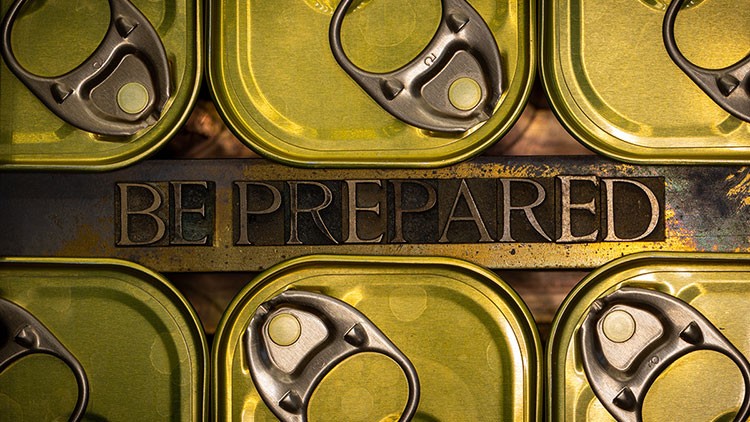
Key Points:
- Prepping can be expensive. Plan your preps wisely to make sure you spend your money wisely.
- Preppers need supplies in the following categories: bugging out, communication, defense, food, fuel, light, medical, shelter, and water.
- Prepping can be overwhelming. Start slow and continue steady.
Part of being a prepared is having a stock of prepper supplies ready for use in the event of a disaster. For those who are new to prepping, understanding just what these prepper supplies should be can be both confusing and overwhelming. Many other prepper sites will have massive lists of gear that you “must” have if you want to have even a margin chance of survival. While these lists may be worthwhile, remember that prepping is a process and that you’re not going to acquire everything you need overnight.
Note that the categories presented below are just that – categories. While I’ll give you some general guidance on what products you can consider under each category, it will by no means be a comprehensive list. You are going to have to figure out what the best products for you are. No one can do that for you; however, I hope this article will at least get you started.
The categories are presented in alphabetical order not by order of importance. If it was the latter, water would come first, not last. To purchase supplies by priority, I recommend you build a SHTF plan first.
That personal threat assessment should help guide your purchase of goods, focusing on what makes the most sense to your situation. It will help you lay out a plan, so purchases are strategic and build on one another. You may need to start with a product from one category, then another, then move back to the first. It depends entirely on your situation. There is no one size fits all approach to prepping.
Prepping, if done poorly, can be expensive. Heck, it’s expensive even when done correctly, but with a plan in place, you can make sure you’re spending your money wisely and not just grabbing the latest shiny object to come along that some business is saying you need. Plan your preps out. Be smart. Be consistent.
Bugging Out

Regardless of whether you plan to bug in or bug out in any SHTF scenario, building a bug out bag is often one of the first steps to prepping. Even if you never have to bug out, the process of building the bag will involve acquiring products that you could almost certainly use in any dire situation. Further, you could use these supplies for hiking, camping, etc. That means you’ll have products to put to use in normal times, which also helps build your skills should you need them for abnormal times.
Prepping is also about redundancy and backup plans, so if you plan to bug in, know that plans might need to change. Fires could rage in your area. A hurricane could come. You have to think about prepping for every situation, not just a breakdown in society where you plan to hunker down in your home. A bug out bag gives you that “grab and go” option that everyone needs.
Bug out supplies are going to consist of smaller, lightweight equipment designed to get you through a 72-hour period, and by “bag” what we really mean is finding the right bug out backpack. That’s where you should start, with the right backpack. You can then fill that bug out pack with gear from the following subcategories:
- Communication – Here you’re going to be looking for portable communication devices. For most people, this is going to mean starting with your cellphone, and until other categories are filled, I’d leave it at that. As you progress in your preps, you can consider handheld ham radios such as the Baofeng UV-5R, Yaesu VX-6R, or maybe a pair of two-way radios.
- Defense – We’ve published an article on the best guns for bugging out. That’s what most people are going to think of when it comes to defense – firearms. Of course, you can also consider weapons that aren’t guns.
- Food – The food that goes into a bug out backpack is going to be very different than the food that gets stored at home for a long-term collapse. Here you’re looking for shorter-term food that is packed with calories and is easy to cook. This might mean MREs, freeze-dried food packets, or some other combination of hiking-type foods. I prefer packing foods with a long shelf-life in my pack just so I don’t have to think about rotating food supplies in my pack. Don’t forget the right cookware!
- Fuel – Fuel for bugging out means fuel for cooking supplies and batteries for any lights or communication devices.
- Light – If money is tight, start with whatever flashlights you have around your house. If you’re buying new, I recommend starting with a quality headlamp. These are perfect because they are small and free up your hands to perform other tasks.
- Medical – You can buy an off-the-shelf first aid kit or build your own. Again, this is something that will prove beneficial regardless of any hypothetical bug out situation or not. Add any medical supplies that are unique to you, i.e., epi-pens, prescriptions, etc.
- Shelter – For most people, a bug out shelter means either a tarp or a tent. Alternatively, it could mean a camper or RV.
- Tools – This category can include many things, from fire starters to an all-purpose multi-tool.
- Water – You will want to carry some water with you, but you’re likely unable to carry 3 days’ worth. Water is heavy! You’ll want to add water filtration and/or purification equipment. For a backpack, this likely means purification tablets, a LifeStraw, or just using a Nalgene bottle with built-in filter.
It should come as no surprise that these are the exact categories that follow for longer-term bug in prepper supplies. The difference here is that what goes into your backpack is going to be more portable.
Further Reading
Want to learn more about bugging out? Consider the following books:
- 53 Essential Bug out Bag Supplies – by Damian Brindle
- Build the Perfect Bug Out Bag – by Creek Stewart
- Poor Man’s Bug Out, Escape and Evasion – by Kirkham Ross
Communications

Preppers often underestimate the importance of communications, but take a look at any disaster and you’ll find how critical it is. Look, for example, at how Puerto Ricans were standing on cars after a hurricane, desperate to try to find a cellphone signal to get news on what’s happening or to tell worried loved ones that they’re okay. You don’t know the value of what you have until it’s gone.
Again, for most people, the first layer of communications is going to be the cellphone they already own. Then, as above for bugging out, they tend to consider ham radios, maybe even old school landlines as those are more reliable during disasters.
For accessing news and information, it’s hard to beat a simple hand-crank radio with solar option. They’re simple, effective, and can even be used to charge cellphones.
Once you have the devices needed to assure communication when the grid goes down, consider ways to protect those devices from EMPs or solar flares as those are the events that will destroy electronic equipment. Mission Darkness makes protective bags for electronic equipment and we’ve reviewed them here and here. They work! Use coupon code “SHTFBLOG” if you’re shopping Mission Darkness.
Further Reading
Want to learn more about prepper communications? Consider the following books:
- Prepper Communications: The Easy Way – by Craig Buck
- Prepper’s Communication Handbook – by Jim Cobb
Defense
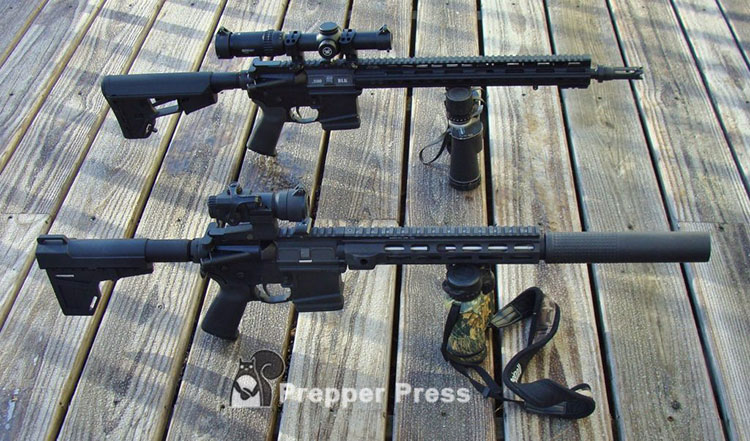
It doesn’t do much good to stock a pile of prepper supplies if you can’t defend it. A post-disaster world is an inherently dangerous world where desperate people will turn to desperate actions. You need to have the means to defend yourself and your family.
“Defense” often evokes images of firearms. Defense certainly includes firearms, but it is limited thinking to stop there. In fact, firearms should be the last place one starts, not the first. The first should be OPSEC, i.e. Operational Security.
Operational security (OPSEC) is a security and risk management process that prevents sensitive information from getting into the wrong hands.
https://www.fortinet.com/resources/cyberglossary/operational-security
For preppers, OPSEC means keeping quiet about your preps. It means embracing the gray man concept. It means not standing out. The value here is that if no one knows you have a stockpile of prepper supplies, you won’t be an immediate target after a collapse by people who are desperate for whatever you have. This is your first line of defense.
If there was a second line of defense, it might be general securing your home. Hardening your doors to slow a burglar, for example, or building a panic room. Supplies in this section might include deadbolts, latches, perimeter lights, etc.
A third line of defense might be non-lethal weapons, or even lethal weapons that fall short of firearm status (we have a list). These items might include knives, pepper spray, etc.
This then brings us to firearms, the final line of defense. If you are new to firearms and prepping, I recommend starting with the Survival Guns book by SHTF Blog’s own Steve Markwith (see Further Reading below). Heck, it’s a great book even if you’re not a beginner. He goes into great detail on starting a collection of firearms and offers solid advice that could save you from spending unnecessary money on guns or accessories that you ultimately don’t need.
Generally, you want at least a few firearms to cover your basic needs: a pistol, a .22 survival rifle, a shotgun, and a centerfire rifle. Look for common calibers (think .22, 9mm, .223, .308, 12 gauge, etc.). We have a list on the best guns for survival, but if you’re starting fresh, start with a .22 rifle like the Ruger 10/22 takedown. Learn the basics of handling a firearm and then move up from there.
Further Reading:
Want to learn more about defense? Consider the following books from Prepper Press:
- Arming for the Apocalypse – by James Ballou
- Holding Your Ground – by Joe Nobody
- Survival Guns – by SHTF Blog writer Steve Markwith
Food
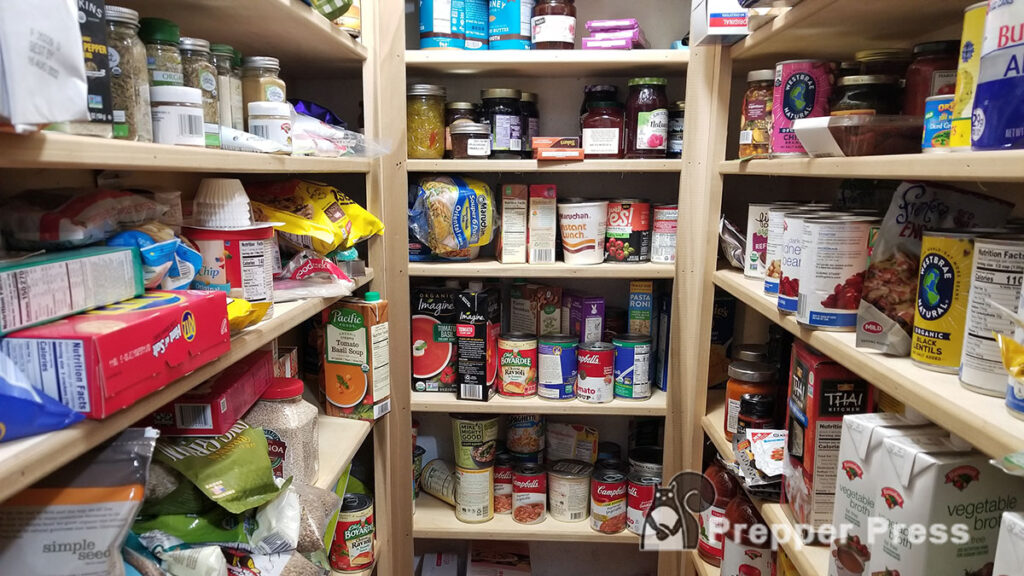
Vladimir Lenin said, “Every society is three meals away from chaos.” And if there was ever anyone who knew about societal chaos and upheaval, it was Lenin.
How long do you think your area grocery stores would stay stocked if delivery trucks stopped coming? What would parents do if they ran out of food to feed their children and saw none coming on the horizon? Think on that.
Should we ever face a full-collapse situation leading to the kinds of societies we see in so many post-apocalyptic movies, access food will be crucial. Think of prior world wars and the food rations that accompanied them. This was the kind of world Lenin knew well. Food is critical.
Fortunately, we don’t see those types of circumstances very often. We do, however experience food shortages due to natural disasters. So, no matter whether you’re preparing for a short-term crisis or a long-term disaster, every prepper needs a solid stock of food.
Growing Your Own
Some people gravitate toward prepping as a natural extension of homesteading. The reverse also happens. Growing your own food is the most self-reliant way to obtain food. There are added benefits to this beyond just the food, however. Gardening means exercise, fresh air, and challenge. One does not just suddenly start growing food – not well, anyway. Gardening is a skill that takes times (seasons) to develop. With the right outlook, this makes it fun.
Prepper supplies in this subcategory of food can include basic hand tools, garden hoses, seeds, etc. For longer-term disasters, it could mean having the supplies (and know-how) to save seeds.
If you’re new to gardening, however, don’t expect that starting a garden is going to save you money. Growing your own food over time can yield savings, but a new garden can be unexpectedly expensive to start – and a lot of work!
Food Storage
For people that don’t have the time to garden on an extensive scale, or don’t have the space for it, straight up food storage is the way to go. Here again, costs can be more than you might think, but you can do it incrementally. I break food storage down into three more categories: short-term, mid-term, and long-term.
Shorter-Term Food Storage
These are food items that are not going to store for an extended period without going rancid. They’re likely the foods you eat every day, and this is where your food storage efforts should start.
If you don’t have one already, build a basic home pantry area. If you don’t have the space for it, find ways to be creative with space. Short of some refrigerated goods, simply buying a few more of the same items you already buy can build your short-term food storage over time.
You should be able to build a one-month supply of food just by adding more of what you already eat each time you go to the grocery store. Watch expiration dates and rotate stock. Stop this approach when you find yourself throwing food away because you couldn’t go through it fast enough. That’s when you move to the next level.
Mid-Term Food Storage
Your mid-term food storage is going to consist of foodstuffs that have shelf lives of up to a year. You may find that some of your stored flour, baking mixes, and similar items within your pantry are only good for this amount of time before decomposition begins to set in.
I consider my canned goods to be mid-term food storage. I like having plenty of them on hand, and truthfully, many possess the ability to be eaten years later, but I feel safest using them within a year’s time after purchase. Again, rotate stock. First in, first out, is the process to apply here.
While we may not want to rely on a freezer, I would say that big game taking during hunting season falls in this category. A big deer can last a small family quite a while. Just make sure you can keep that freezer running during power outages.
Long-Term Food Storage
Your long-term food storage will consist of food that can safely be stored for many years. I call this category the “set it and forget it” storage, meaning you build it or buy it and then you can forget it.
Your freeze-dried foods, MREs, and other items such as whole grain wheat, dehydrated vegetables, beans, rice, oats, and pastas would all easily fit into this section. These are what you’re going to want to store so that you can make it through a long-term disaster scenario (EMP/war/etc.).
My approach for this category is a mix of buying freeze-dried foods and stocking rice and beans (and similar foods). I even have some long-term coffee storage. I have not yet graduated to buying my own home freeze dryer, however.
There are a few prepper supplies that you’re going to need to stock within this category of food as well. In particular, you’re going to want to consider investing in Mylar bags, food-grade 5-gallon buckets, and desiccant packets.
These prepper supplies will help to ensure that your investment in long-term food storage is as safe as possible until the day comes when you must use it.
Further Reading:
- A Guidebook to Acquiring Food, Stockpiling, Storing, and Preparing for Survival – by Geoffrey Richards
- Complete Guide to Home Canning – by USDA
- Food Storage for Self-Sufficiency and Survival – by Angela Paskett
Fuel
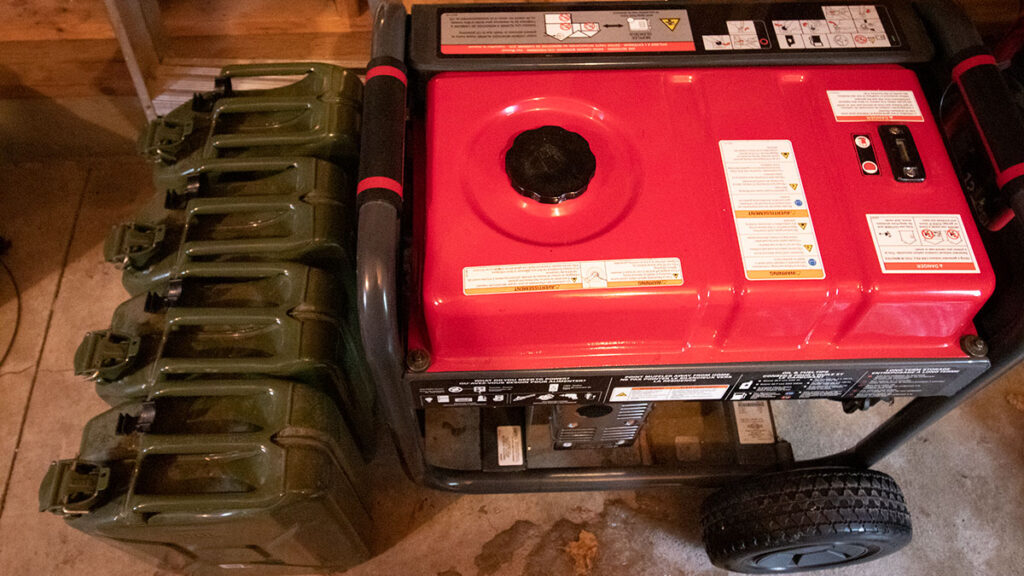
Fuel is a tricky one to add to any list of prepper supplies. No matter the scenario, you can only store so much of it, not while staying practical anyway. By “fuel” we are essentially talking about energy: gasoline, propane, firewood, solar power, etc. You can even think of household batters (know how to store them).
My approach to long-term prepping has always been to prepare to live without fuel – or as little of it as possible. That creates its own set of challenges, however. Thinking in shorter-term disasters, fuel can be easily stored to meet your needs.
See my article on how to store gas for a long time. Almost everyone needs gasoline in a disaster. It’s one of the first things to run out. People need to fuel vehicles and generators. With a few good gas cans, some ethanol-free gas (find it here), and some fuel stabilizer, you can store gas for a few years. Rotate stock.
That’s just gasoline, however. You may also want to include portable solar panels for charging electronic devices. You might want cords of dry firewood. If you live in New England and heat with oil, you might want to install a 2nd oil tank. Maybe you even want to consider a coal stove to heat your home. Is coal dirty? Perhaps. How long does coal last? Practically forever. See coal’s advantages over wood.
I’ve given you something to think about when adding fuel to your prepper supplies, but it’s hard to give specific suggestions without knowing your personal threat assessments. Firewood might make sense where I live in Maine, less so if you live in Arizona. An apartment dweller is going to have very different energy needs than someone living off the grid.
Light
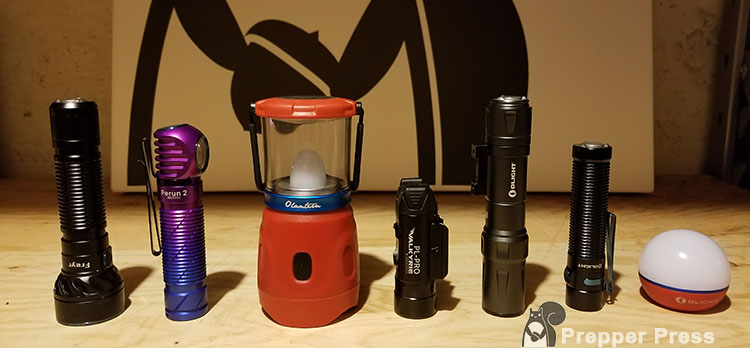
Fortunately, light is an easier supply category to manage than fuel. However, you will need fuel of some type to recharge your lights, even if that means solar panels.
Most preppers are going to start with a quality headlamp. Conveniently, this can be the same lamp you added to your bug out backpack. Shooting enthusiasts might incorporate some tactical lights. You also might want to add a gas lantern.
Medical
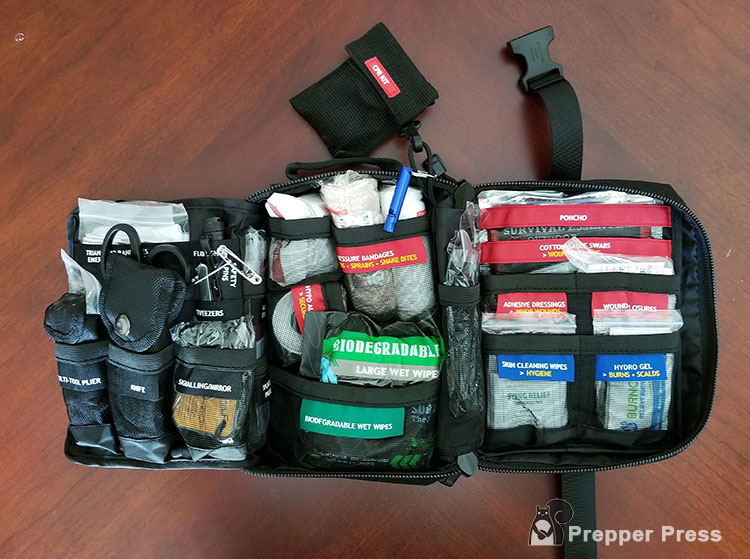
Owning sufficient medical equipment is another one of the more overlooked aspects of prepping, yet this by no means is indicative of its being any less necessary. When it comes to medical supplies, we can break down our needs into two groups: minor injuries and major injuries.
| First Responder Kit | Where There is No Doctor | Where There is No Dentist | Wound Seal Powder |
| Personal Medications | Epi-pens | Benadryl | Tourniquets |
| Rolled Splint | Contractor First Aid Kit | Burn Kit | Dental Tools |
Minor Injuries
To deal with your minor injuries, you’re going to need a quality first aid kit with access to plenty of bandages, gauze, antiseptic, anti-inflammatories, tweezers, pain medications, and ice packs. Provided you have those basic items at hand, you have the means to deal with the great majority of first aid issues that you’re likely to encounter on a daily basis.
Keep in mind that this most certainly won’t cover every issue, but it will help you deal with a very large number of them. Again, like with the bug out gear, don’t overlook the medical needs specific to you and your family.
Major Injuries
It’s when we come to major injuries, not only do you need the right equipment, but you also need the knowledge itself.
You’re likely not going to become an EMT as a means of prepping (or maybe you will!), so I suggest keeping it simple. I recommend purchasing a copy of Where There is No Doctor (the free pdf can be downloaded here). It’s easily the most widely used healthcare manual in the world, and it fits the types of situations a prepper is thinking about. Likewise, consider Where There is No Dentist (also free download here).
When it comes to equipment, you’re going to expand your medical prepper supplies to include items such as:
- Tourniquets
- Sucking chest wound patches
- QuikClot
- Various splints and braces
- Benadryl/Epi-pens
Oh, and don’t forget to build a sanitation kit, because that fits here. And maybe you will want to buy a decent poop bucket. You need a plan for human waste!
Further Reading:
- Department of the Army’s First Aid Manual – by Department of the Army
- Tactical Combat and Casualty Care and Wound Treatment – by Department of Defense
- Where There is No Dentist – by Murray Dickson
- Where There is No Doctor – by David Werner
Shelter
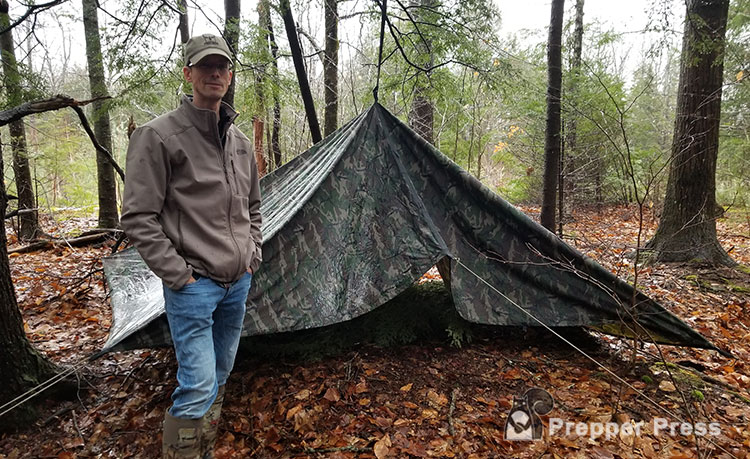
A prepper’s shelter comes down to your home first and foremost, and then a tarp, tent, RV, etc. – whatever it takes to become mobile
Adding shelter to your list of necessary supplies really only applies for bugging out as most of us consider our existing homes to be our go-to shelter. Bugging out, whether you are heading to that coveted cabin in the woods or just your parents’ house, usually just requires a temporary shelter while you are en route, and even that could just mean sleeping in your car or . It is advantageous, however, to have a backup plan if you need to move on foot, and that type of shelter usually comes down to tarp vs tent.
If you are looking at your home, whether it’s a farm, house, or apartment, your approach to “supplies” for it are likely going to involve home security measures: perimeter lights, security cameras, deadbolts, etc. You could also consider the fuel category as supplies for the home if it’s fuel used for the home.
Further Reading:
- Barbed Wire, Barricades, and Bunkers – by F.J. Bohan
- The Complete Survival Shelters Handbook – by Anthonio Akkermans
Water
We take water for granted. Need to boil some pasta? Need to flush the toilet? Want a hot shower? No problem. We just turn the handle and – poof – clean, potable water at our fingertips.
When catastrophe strikes, access to water is usually disrupted. We can’t live without water, we all know this, but it’s easy to forget exactly how much we use. In a disaster situation, we’re going to need water for drinking, cooking, rehydrating freeze-dried foods, cleaning, etc.
A prepper assures access to clean water by one of two methods – storing clean water or having the means to clean dirty water. Ideally, your prepper supplies covers both categories.
Water Storage
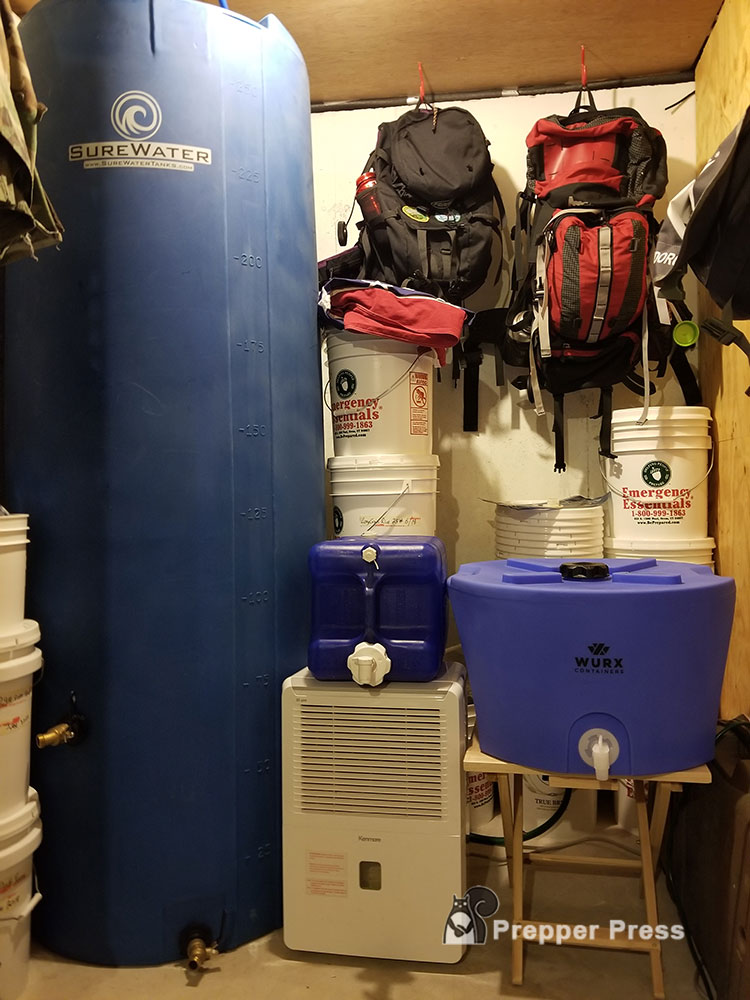
The advantage to having water stored is that it ends up immediately available after disaster strikes. You don’t have to walk out to some stream or pond to filter water for dinner, as an example. Like with food, you just need to rotate stock once in a while.
Depending on the space you have available and your water needs (again, that personal threat assessment helps), you can get different water storage products to fit your situation. Over the years, I’ve accumulated many different types. According to size, these are my current favorites:
| Large Container | Mid-Size Container | Small Container |
|---|---|---|
| Sure Water Tank | Wurx | AquaBricks |
Water Purification
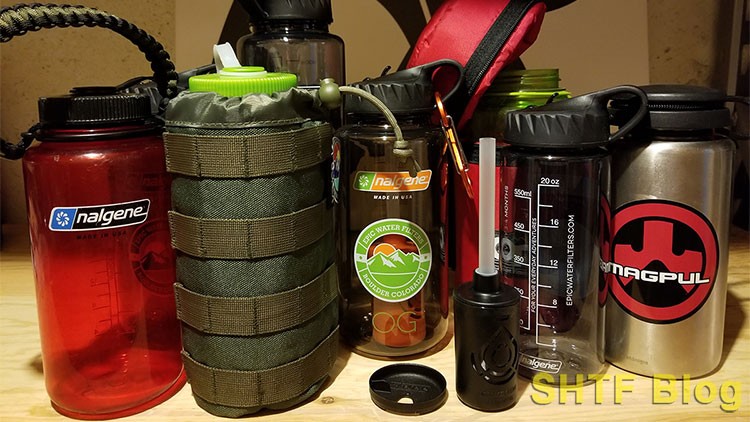
While water storage is vital, you can only store so much, and at some point, you’re going to run out. Drinking water straight out of a creek, stream, or lake is a surefire way of ending up with a debilitating form of stomach bug, and in a disaster scenario, being sick is not something that you can afford.
Thus, you need some way to ensure that the water you are putting into your body is safe to ingest. There are three primary ways that I like to do this: UV purification, filter purification, and chemical purification (see filter vs purifier).
Each of these methods has its virtues and its faults, but you do need to have several methods to use. I believe that SteriPens (for UV), MSR purifier pump (for filter purification), and AquaMira (for chemical purification) are the most convenient and effective of all these various types of methods. You will find countless competing products, however.
| UV Purification | Purification | Chemical Filtration |
|---|---|---|
| SteriPen | MSR Guardian | AquaMira |
I highly recommend investing in at least two of these various forms of water purification (at least one for mobile use and another for large volume use) so that you can ensure your family has access to clean water no matter where you’re at. The bonus here is that some of these devices can double as your bug out gear.
Also, consider investing in a rain barrel system attached to your gutter system. This will enable you to continually collect more water from the environment around you as time goes on. This water will need to be purified before it is drunk, but that is a small price to pay for a continual harvest of water right at your house.
Further Reading:
- Harvesting H2O: A Prepper’s Guide – by Nicholas Hyde
- The Prepper’s Water Survival Guide – by Daisy Luther
Prepper Supplies Summary
How do you eat an elephant? One bite at a time. This adage applies perfectly to securing prepper supplies. Prepping in general, for the person just beginning, can seem overwhelming. There is so much to learn, so much to do, so much to secure. People speak in prepper acronyms throwing around terms you’ve never even heard! Then, if you keep watching the news, it seems like a serious crisis is forever right around the corner. This can create a serious sense of anxiety – “The end is near – I can’t prepare fast enough!”
Relax. Take a breath. Conduct that personal threat assessment that I described. Start with the most realistic threats you face. Begin slow – continue steady.
What about you? What’s the status of your prepper supplies? Is there something I missed? Let me know in the comments section.

3 comments
For medical,, it should go beyond first aid and common over-the-counter medicine.. There is an aspect to the medical section that isn’t covered: prescription medicine. For example: someone has had their thyroid removed and has a lifelong dependency on thyroid medication. How are prescription drugs obtained when there are no deliveries of medicine to the local pharmacies? Etc. Just wanted to point that out.
Yeah, that’s a tough one. There are workarounds with antibiotics, but specialized medicines are more problematic.
Something to consider for those who wear contact lenses….. an extra pair of glasses. Contact lenses only last for so long.